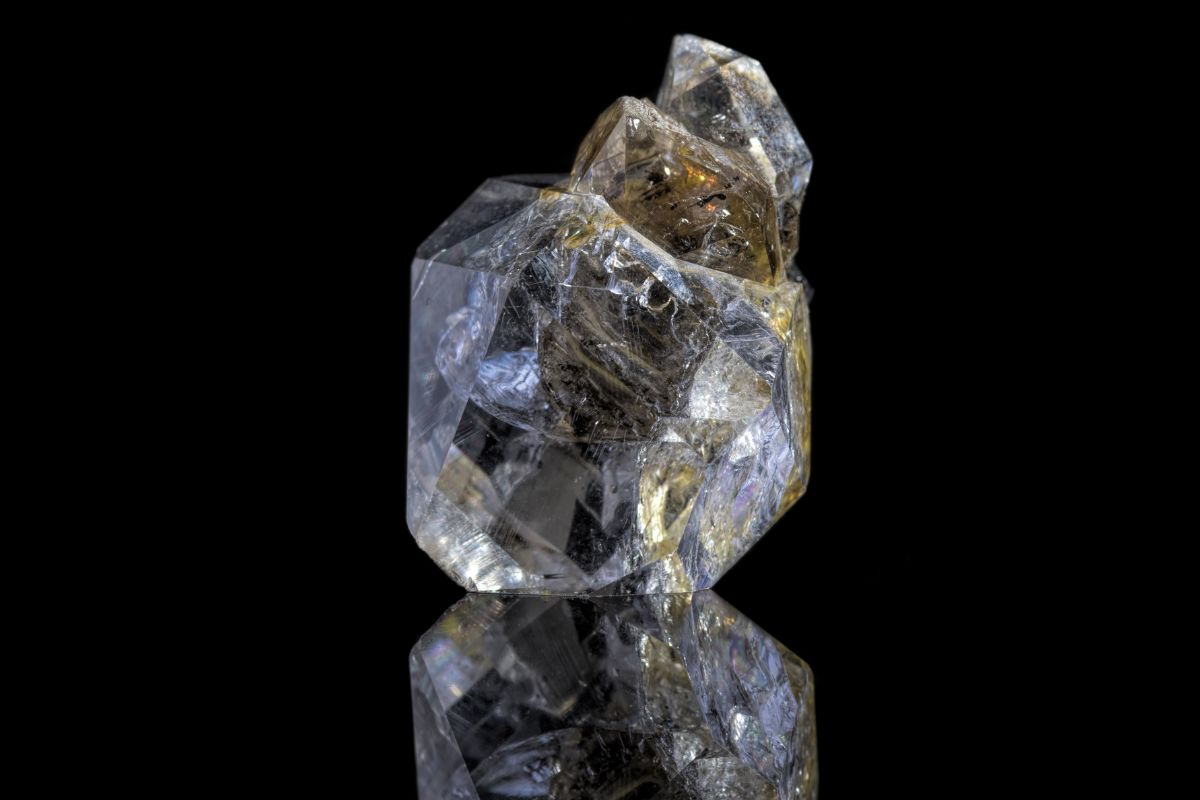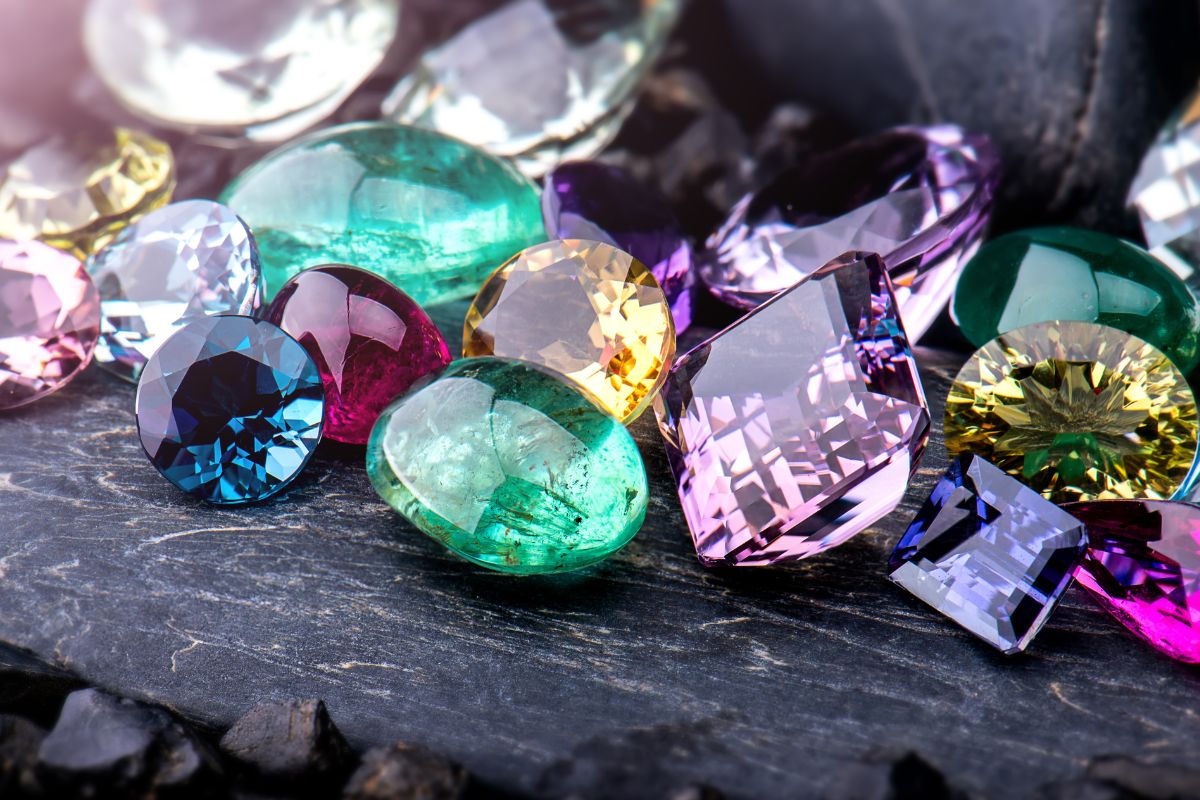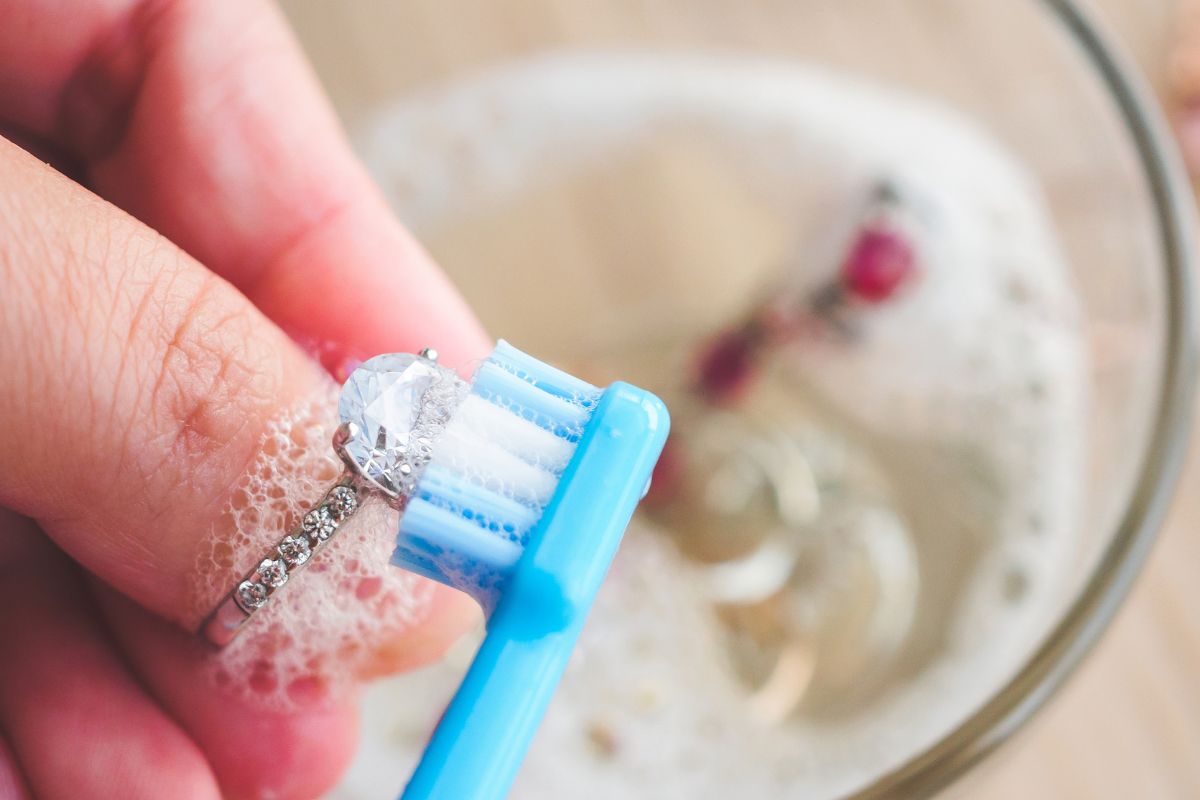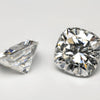
White Topaz vs Diamond: Understanding Value, Durability, and Sparkle
When considering the purchase of a gemstone, you may find yourself debating between the classic allure of a diamond and the subtle charm of white topaz. Both gemstones offer unique attributes and share some visual similarities, but they each come with their own set of characteristics that set them apart. Understanding the distinctions between a diamond and white topaz is essential in making an informed decision that aligns with your personal style and budget.
Birthstone Rings on Sale – Beauty You Love, Prices You’ll Love More!
A diamond is often celebrated for its unparalleled hardness and remarkable brilliance. It scores a perfect 10 on the Mohs scale of hardness, a testament to its durability and suitability for everyday wear. Not only is a diamond the hardest known natural material on Earth, but it also possesses a fire and sparkle that's hard to match due to its high refractive index and flawless crystal structure.
White topaz, on the other hand, presents a more affordable alternative while still offering an eye-catching shimmer. While not as hard as diamonds topaz ranks at 8 on the Mohs scale it's still suitable for a variety of jewelry settings. Its clear, white appearance may draw comparisons to diamonds, though it typically doesn't exhibit the same level of fiery brilliance. For those seeking a gemstone with a clear and colorless aesthetic at a fraction of the cost, white topaz is a worthy contender.
Formation and Origin
When you explore the world of gemstones, understanding their formation and origins is fascinating. Both diamonds and white topaz are natural wonders with distinct processes that lead to their creation.

Diamond Formation
Diamonds are formed deep within the Earth's mantle, where extreme conditions of high temperature and pressure exist. Carbon atoms bond in a crystal structure over 1 to 3 billion years, resulting in the hardest natural material known. The majority of natural diamonds are brought to the surface through volcanic eruptions in a type of rock called kimberlite. Key locations for diamond mining are countries with ancient cratonic roots like Botswana, Canada, Australia, and Russia which is known for its remarkable Siberian deposits that have contributed significantly to our understanding of diamond inclusions and formation processes.

White Topaz Formation
On the other hand, white topaz primarily forms in pegmatite rocks through a process called crystallization. It occurs when nutrient-rich fluids or vapors cool and then solidify into a crystalline structure containing the element aluminum and fluorine. White topaz can be found in various locations globally, with Brazil being one of the prime spots for its production. This gemstone doesn't require the same high temperatures and pressures as a diamond, but its formation is no less remarkable, frequently occurring in the cavities or voids of the pegmatite rock.
Physical and Chemical Properties
When you compare white topaz and diamond, you're exploring two distinct gemstones, each with unique physical and chemical characteristics. These properties significantly influence their appearance, rarity, and value.
| Property | White Topaz | Diamond |
|---|---|---|
| Chemical Composition | Al2SiO4(F,OH)2 - Aluminum silicate fluoride hydroxide | C - Carbon |
| Color | Colorless (can exhibit various hues) | Colorless, various colors |
| Crystal System | Orthorhombic | Cubic |
| Hardness (Mohs Scale) | 8 | 10 |
| Specific Gravity | 3.49 - 3.57 | 3.52 |
| Cleavage | Perfect in one direction | None |
| Refractive Index | 1.609 - 1.643 | 2.42 |
| Luster | Vitreous | Adamantine |
| Transparency | Transparent to translucent | Transparent |
| Origin | Various locations (natural) or lab-created | Various locations (natural) |
Mineral Composition
White Topaz is a silicate mineral of aluminium and fluorine with the chemical formula Al_2SiO_4(F,OH)_2. This composition places it within the topaz family, which is a part of the silicate group of minerals. Such minerals are commonly found in granite and other igneous rocks.
Diamond, on the other hand, is an allotrope of carbon, with each carbon atom covalently bonded to four other carbon atoms in a three-dimensional lattice. This arrangement is what gives diamond its remarkable hardness.
Color Variations
White topaz, as the name suggests, is typically colorless to translucent, but it can also exhibit a range of colors including blue, yellow, pink, green, and orange due to natural or intentional impurities. In contrast, diamonds are most coveted when they are colorless, resembling pure crystalline carbon. However, diamonds too can come in a spectrum of colors depending on the types of chemicals and geological processes they have been exposed to.
Refractive Index
The refractive index differentiates these two gemstones' brilliance and sparkle. White topaz has a refractive index ranging from 1.609 to 1.643, which is relatively low compared to diamond's higher refractive index of 2.42, cited in the Minerals and Gems study. This difference is a key factor in diamond's unparalleled brilliance and fiery dispersion, making it highly prized for its optical properties.
Gemstone Characteristics

When comparing white topaz to diamond, you'll discover significant differences in attributes like hardness, clarity, and the way they are cut. Each factor contributes to the overall quality and longevity of the gemstone.
Hardness and Durability
White topaz ranks at an 8 on the Mohs scale of hardness, which implies it's quite hard; however, it's not as durable as diamond, which tops the scale at 10. This means diamonds are more resistant to scratching and chipping. The durability of a gemstone is essential as it determines how well the gem can withstand being worn regularly without sustaining damage.
Clarity and Inclusions
Diamonds are renowned for their clarity, though they can still contain internal inclusions which are imperfections within the gem. On the other hand, white topaz is typically clear but may have inclusions that can be seen with the naked eye or under magnification. The fewer the inclusions, the more valuable and desirable the gemstone is considered.
Cut and Shape
The cut of a gemstone enhances its brilliance and determines its shape. Diamonds are often cut into a variety of shapes with the round cut being the most popular due to its ability to maximize light reflection. White topaz can also be fashioned into similar cuts, but the precision cut of diamonds is unparalleled, resulting in an unmatched brilliance. The skill applied in cutting a diamond significantly affects its value, much more so than with white topaz.
Aesthetic Qualities

When you're comparing white topaz to diamond, the most striking differences lie in their ability to refract light and their natural coloration. These characteristics significantly influence their aesthetic appeal and are critical in deciding which gem suits your style and preferences.
Brilliance and Sparkle
White topaz and diamond both have unique ways of interacting with light. Diamonds are renowned for their exceptional brilliance, which is the white light reflected back to the eye, and their fire, the dispersion of light into the colors of the rainbow. This gives them a sparkling appearance that many find captivating. The refractive index of a diamond is quite high at 2.42, indicating its ability to bend light efficiently and contribute to its brilliant sparkle.
On the other hand, white topaz does reflect light but with less brilliance compared to diamonds. This is due to its lower refractive index. Typically, the sparkle of white topaz is softer, and although it still catches the eye, it doesn't break light into as many spectral colors as diamond.
Color and Appearance
Considering color and appearance, diamonds range from colorless to slightly yellow or brown, with the most valued being the former. The absence of color allows more light to pass through and contributes to the diamond's sparkle. White topaz is also admired for its clearness, and because it is naturally colorless, it can sometimes be mistaken for diamond at first glance.
However, the appearance of white topaz can alter over time due to its susceptibility to scratches and abrasion. It may require more frequent cleaning or even repolishing to maintain its shine, whereas diamonds are the hardest known mineral and retain their polish extremely well. This durability contributes to the long-lasting appearance of diamonds and is a considerable factor in their aesthetic and practical appeal.
Jewelry Considerations
When selecting between white topaz and diamonds for jewelry, especially engagement rings, consider the appearance, durability, and long-term care requirements.
Engagement Rings and Fashion
For your engagement ring, you might lean towards a diamond for its timeless appeal and unmatched hardness, which translates to durability. Diamonds score a 10 on the Mohs scale, ensuring they can withstand daily wear. In contrast, white topaz is more affordable, but it's also softer, ranking at an 8 on the Mohs scale, meaning it's more susceptible to scratches over time.
Maintenance and Care
Regular maintenance for white topaz includes cleaning and periodic inspections, as it can accumulate scratches and cloudiness, reducing its sparkle. Meanwhile, diamonds require less frequent maintenance due to their resistance to scratching. You should clean your diamond jewelry with a solution of warm water and mild detergent, and it can generally withstand professional cleaning methods, making it easier to maintain its brilliance over time.
| Consideration | White Topaz | Diamond |
|---|---|---|
| Hardness | 8 (Mohs Scale) | 10 (Mohs Scale) |
| Scratch Resistance | Moderate; can be scratched by harder materials | High; resistant to scratches |
| Cleaning | Mild soap and warm water. Avoid steam and ultrasonic cleaners. | Mild soap and warm water. Can also use steam and ultrasonic cleaners. |
| Chemical Sensitivity | Avoid exposure to harsh chemicals and prolonged sunlight to prevent color change. | Generally resistant to most chemicals, but some treatments may be affected. |
| Setting Durability | Be cautious with prong settings; avoid rough handling. | Durable for various settings; secure prongs periodically. |
| Storage | Store separately to prevent scratching; avoid contact with other gemstones. | Store separately or in a fabric-lined box to prevent scratching. |
| Professional Maintenance | Periodic checks for loose settings; professional cleaning if needed. | Periodic professional cleaning and inspection for loose settings. |
Economical Aspects
When considering white topaz versus diamonds, your decision is largely influenced by both price and long-term value. These factors will dictate whether a gemstone fits your budget and serves as a wise investment.
Price and Affordability
White topaz is significantly more affordable than diamonds, making it an attractive choice if you're seeking a budget-friendly diamond alternative. To put it into perspective, a carat of good quality white topaz might cost you around $8-$50, while a similar sized diamond could range from $2,000-$25,000 depending on its quality. This stark price difference means white topaz offers the luxurious look of a gemstone without the hefty price tag typically associated with diamonds.
Value Over Time
Diamonds are renowned for their lasting value and are often viewed as an investment. On the other hand, white topaz does not typically retain its value over time as diamonds do. While white topaz can serve as an elegant diamond substitute in the short term, diamonds have a reputation for maintaining or increasing their value, making them a potentially lucrative item if you're considering resale value. It's important to note that the market for diamonds is well-established, providing a level of predictability in terms of resale, which is less certain for white topaz.
Market Varieties and Alternatives

When exploring alternatives to traditional diamonds, you'll find a range of natural and synthetic options, each offering distinct qualities and a spectrum of colors. These alternatives cater to different preferences and budgets without compromising on the allure that precious stones typically hold.
Natural vs Synthetic Diamonds
Natural Diamonds: Mined from the Earth, natural diamonds are graded based on the 4Cs - cut, color, clarity, and carat. Each diamond possesses a unique set of characteristics; no two stones are exactly alike.
Synthetic Diamonds: Synthetic or lab-grown diamonds are created in controlled environments using high-pressure high-temperature (HPHT) or chemical vapor deposition (CVD) methods. They share the same physical and chemical properties as their natural counterparts and are often favored for their ethical and environmental advantages.
Comparison with Other Gemstones
When you compare diamonds to other gemstones, several alternatives may catch your eye:
| Gemstone | Color | Hardness (Mohs Scale) | Brilliance | Special Characteristics |
|---|---|---|---|---|
| White Topaz | Colorless (can exhibit various hues) | 8 | High | Affordable and versatile |
| Diamond | Colorless, various colors | 10 | High | Hardest natural gemstone |
| Blue Topaz | Blue (various shades) | 8 | High | Enhanced color through irradiation |
| Amethyst | Purple | 7 | Moderate | A variety of quartz with a purple hue |
| Citrine | Yellow to orange-brown | 7 | Moderate | A variety of quartz with a yellow hue |
| Aquamarine | Blue to blue-green | 7.5 - 8 | High | A variety of beryl with a blue hue |
When assessing gemstone varieties on the market, consider attributes like hardness, brilliance, and color. Your choice between a natural gem like a mined diamond or a synthetic option depends on personal preference, values, and budget.
Care and Maintenance Tips

When considering the upkeep of white topaz and diamonds, it's crucial to be mindful of their distinct characteristics. White topaz requires careful handling to avoid scratches or chipping, as it's less resilient compared to diamonds.
For White Topaz:
- Cleaning: Soak in warm soapy water and gently brush with a soft toothbrush to remove accumulated dirt and oil.
- Avoid Harsh Chemicals: Harsh cleansers can dull the stone's shine. Stick to mild soap.
- Storage: Store separately in a soft cloth pouch to prevent scratches from harder stones.
For Diamonds:
- Routine Cleaning: Soak in a solution of warm water and mild detergent, then use a soft brush.
- Professional Maintenance: Consider professional cleaning and re-polishing every couple of years to maintain brilliance.
- Toughness: Diamonds are highly durable, making them less prone to scratches, but they can still chip if struck with enough force.
In general, for both gemstones:
- Regular Checks: Have settings checked annually by a professional to prevent loss.
- Careful Wear: Avoid wearing during activities that may expose the stones to hard knocks.
Remember, consistent care keeps your gemstones looking their best and prolongs their lifetime.
Environmental and Ethical Factors

When considering the environmental and ethical factors of white topaz compared to diamonds, you should be aware of several key aspects related to sustainability, ethical concerns, and responsible sourcing.
Diamonds: Diamond mining has a significant ecological footprint. Historically, diamond extraction has led to soil erosion, deforestation, and the disruption of ecosystems. However, strides have been taken to mitigate these effects. It's crucial to look for diamonds that adhere to the Kimberley Process, which aims to prevent the trade of conflict diamonds and ensure ethical sourcing. Still, even with such measures, the environmental toll can be considerable.
- Responsible Sourcing: Efforts are being made to recover diamonds in ways that protect the environment, as seen in practices at the Diavik Mine in Canada.
- Ethical Concerns: Ethical considerations go beyond the mining impact, addressing worker safety and community welfare.
White Topaz: Topaz mining is generally less detrimental to the environment compared to diamond mining, yet concerns remain. Topaz is typically located using smaller-scale operations, which minimizes its environmental footprint.
- Sustainability: Extraction methods for white topaz are considered more sustainable due to less invasive mining techniques.
- Ethical Concerns: The ethical issues surrounding topaz focus more on labor conditions and fair compensation.
As a consumer, your preference between white topaz and diamonds may be influenced by how each aligns with your values on environmental protection and ethical considerations. Seek out jewelers who emphasize sustainability in their practices and can provide detailed information about the origins of their gemstones, ensuring that your choice supports responsible stewardship of natural resources.
Buying Guide

In your search for the perfect gemstone, understanding the specifics of quality and how they align with your preferences is paramount. Evaluating each stone's authenticity, intrinsic properties, and how they fit within your budget will ensure you make a well-informed decision.
Determining Quality and Authenticity
Quality
To verify the quality and authenticity of gemstones, consider the following factors:
- Clarity: Look for inclusions or imperfections within the stone. A diamond's clarity is graded from Flawless (FL) to Included (I), while white topaz clarity is generally assessed by eye.
- Color: Diamonds range from colorless to light yellow, rated D (colorless) through Z (light color). In contrast, white topaz should be clear with no yellow or brown tinge.
- Cut: The cut of a gemstone affects its brilliance. Ideal cuts reflect light evenly. Both diamonds and white topaz should have precise, symmetrical cuts.
Authenticity
To ensure a gemstone's authenticity, request a certificate from a reputable gemological laboratory. This document should list the stone's attributes and any treatments it has undergone.
Choosing the Right Gemstone for You
Personal Preferences and Budget
Your choice should reflect a balance between personal taste and practical considerations:
- Budget: Diamonds are typically more expensive than white topaz. Determine your budget beforehand to guide your decision.
- Center Stone: If you seek a center stone for an engagement ring, remember a diamond's scratch-resistant hardness makes it ideal for everyday wear.
- Affordability: White topaz offers a diamond-like appearance at a more affordable price point.
- Halo: Consider the design of the piece. A halo setting can enhance the appearance of both diamonds and white topaz, making the center stone appear larger.
When selecting a gemstone, keep in mind the wear and tear it might face. Diamonds rank as the hardest mineral, making them more scratch-resistant than white topaz. Also consider the depth and table of the stone, as these factors influence its overall appearance and sparkle.
Frequently Asked Questions
In this section, you'll find precise and detailed answers to commonly asked questions regarding white topaz and how it compares to diamonds and other gemstones, ensuring you have the necessary knowledge to make an informed decision.
What are the distinguishing features that set apart white topaz from diamonds?
White topaz is a transparent gemstone with a lower refractive index and hardness than diamonds, which means it sparkles less and is more susceptible to scratches. Diamonds are renowned for their exceptional brilliance and durability, ranking a 10 on the Mohs scale of mineral hardness, while white topaz ranks at 8.
How does white topaz compare to white sapphire in terms of appearance and durability?
White topaz and white sapphire both serve as alternatives to diamonds, yet sapphires are generally harder and more scratch-resistant, scoring a 9 on the Mohs scale. In terms of appearance, white sapphires come closer to mimicking a diamond's brilliance, although they still lack the distinct fire and scintillation of a diamond.
What are the unique benefits of choosing a white topaz engagement ring?
Choosing a white topaz engagement ring means opting for a more budget-friendly gemstone that still offers a clear and classic look. White topaz can be a good choice if you prioritize size and cost over ultimate sparkle and longevity.
How does the value and pricing of white topaz differ from that of diamonds?
White topaz is significantly more affordable than diamonds, which reflects its relative abundance and lower demand. Diamonds are priced based on the four Cs - cut, color, clarity, and carat weight leading to a wide range of prices but generally at a much higher price point compared to white topaz.
Can you differentiate between white topaz and cubic zirconia on visual inspection?
On visual inspection, white topaz may be distinguished from cubic zirconia by its subtler shine and less pronounced fire. Cubic zirconia tends to have a more pronounced sparkle that can somewhat mimic the brilliance of a diamond and is heavier than topaz.
What should one consider when deciding between white topaz and diamond for jewelry?
When deciding between white topaz and diamond for jewelry, consider factors such as budget, the importance of durability and longevity, and preference for sparkle and brilliance. Diamonds are investment pieces known for their unmatched durability and sparkle, while white topaz offers a more affordable yet still beautiful alternative.
Checkout some of our top collections:










